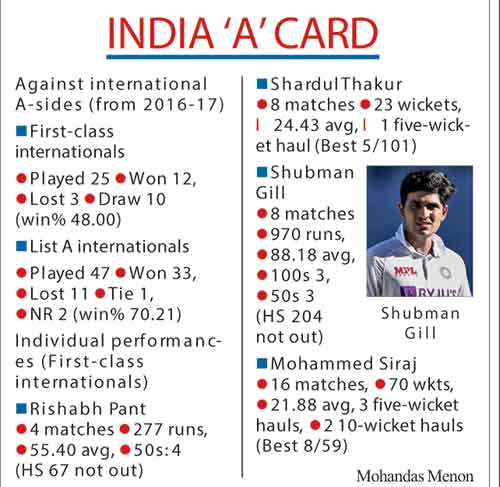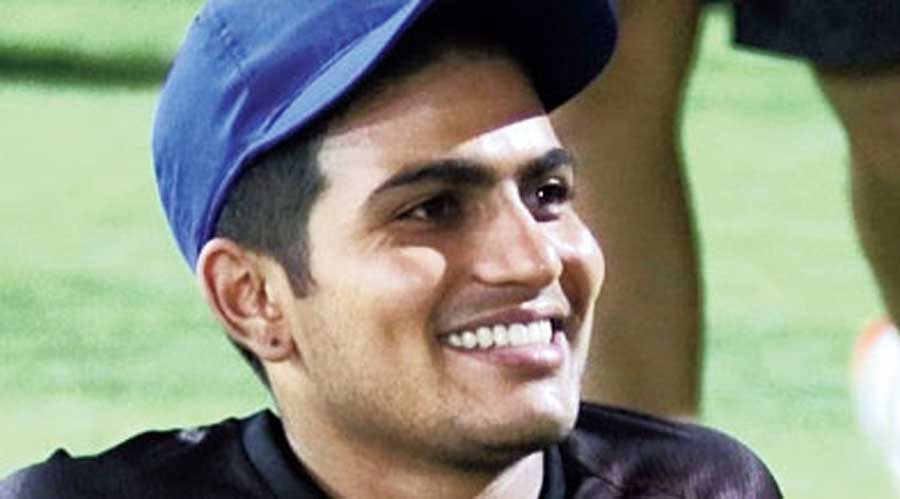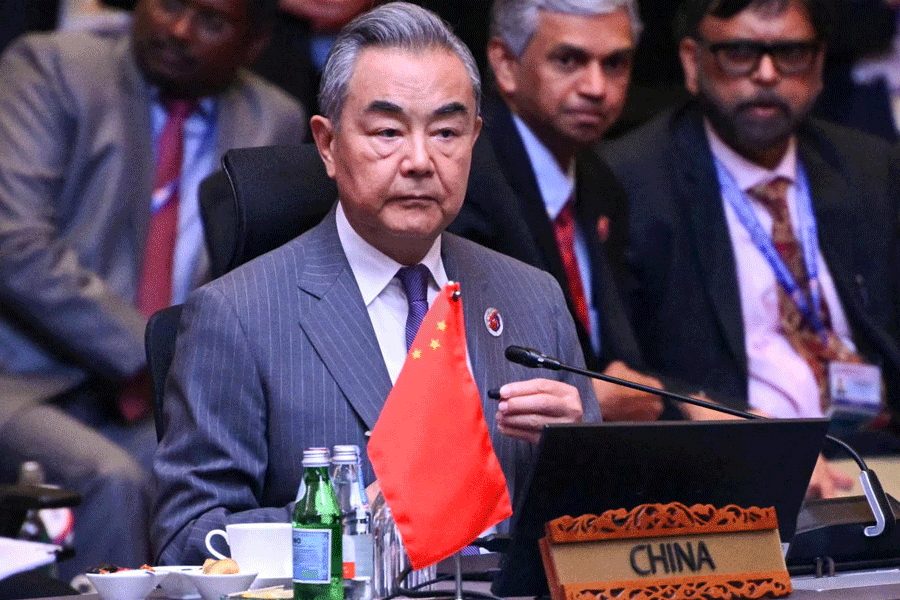Shubman Gill, Mohammed Siraj and Shardul Thakur, among the architects of the historic Test series win in Australia, had spoken about how beneficial India A matches were behind their progress.
When such views are expressed by cricketers still relatively new in international cricket and at a time the T20 format is being seen as a springboard to the highest level, it reflects how significant multi-day games still are.
And as for the ‘A’ tours and matches, their relevance gets underlined further.
“The whole objective of ‘A’ tours is when you go abroad, as a youngster you get first-hand experience of playing in overseas conditions. When these guys then move on to play international cricket abroad, they don’t find things to be too difficult,” former national selector Devang Gandhi told The Telegraph.
“If you look at guys like Shubman, Shardul and Rishabh (Pant), all of them have an experience of a minimum of four to five such tours. They’ve been to South Africa, England, West Indies, and this experience has definitely helped them in the transition from being an India ‘A’ player to an India cricketer.
“One major advantage they have is that they aren’t overawed by the situation when they are playing at the highest level. For instance, Shubman, on debut, looked very assured and at ease.”
Not just India, but other nations can also benefit from these tours and matches as they are a bridge between first-class and international cricket. “You’re playing against teams comprising upcoming and even current international cricketers, and that too, at Test venues sometimes. So you get a flavour of international cricket.
“At the same time, it also leads to a big talent pool, which has strengthened our bench strength. Over the last few years, we’ve had around 9-10 such tours and we won in eight of them, which reflects how well our youngsters are placed if they are to debut at the big stage,” Devang said.

‘Shadow tours’
Since 2016, the ‘A’ games have become more of a regular feature in Indian cricket, especially with “shadow tours” — ‘A’ tours, especially before away series in SENA (South Africa, England, New Zealand and Australia) countries.
“See, it’s in the SENA countries where you come across testing conditions,” Devang said. “On these shadow tours, we’ve had players like Ajinkya (Rahane), (Hanuma) Vihari, (Cheteshwar) Pujara and (Ravichandran) Ashwin going in and playing some matches for the ‘A’ team before the main series began.
“There have been around five shadow tours since the 2017-18 season (before the South Africa tour) and each of them benefited the guys in some way or the other.”
Right balance
Former India captain Dilip Vengsarkar, however, believes striking the right balance when scheduling domestic matches and ‘A’ tours is key. “You cannot send young cricketers abroad to play matches at the expense of domestic cricket.
“An ‘A’ tour has its own place, but a Ranji Trophy or for that matter, a Duleep Trophy match shouldn’t be given any less importance. The improvement of these young cricketers takes place through domestic cricket first as they play alongside senior, experienced cricketers in their respective teams and begin learning various aspects/nuances of the game.
“If you can tour abroad, it definitely gives you the exposure and ability to adapt to different conditions and you gain exposure too. Having said that, you need to find the right balance when you schedule domestic and India A matches,” Vengsarkar, also a former chief selector, said.











